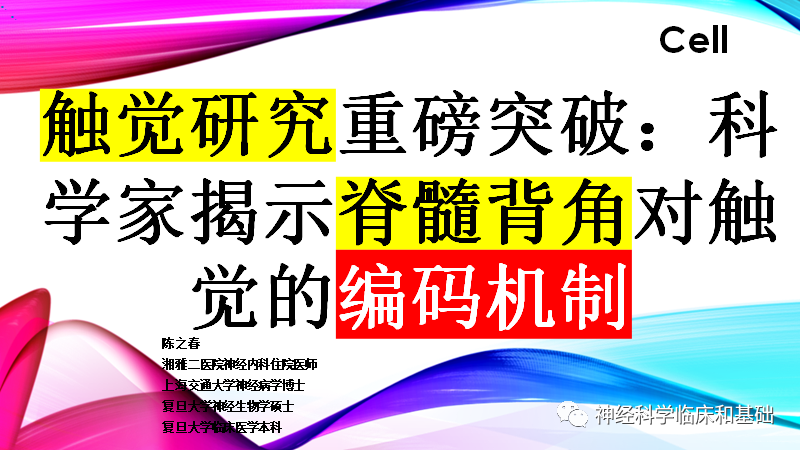Cell—触觉研究重磅突破:科学家揭示脊髓背角对触觉的编码机制。
2022-11-13 神经科学临床和基础 神经科学临床和基础
通过对皮肤施加一系列的机械刺激、大规模的体内电生理记录和遗传操纵,研究人员发现小鼠脊髓DH中的神经元接受低阈值和高阈值机械感受器的输入,并表现出六种功能不同的机械反应谱之一。
 中文摘要
中文摘要
脊髓背角(DH)中触觉的编码及其对大脑触觉表征的影响尚不清楚。通过对皮肤施加一系列的机械刺激、大规模的体内电生理记录和遗传操纵,研究人员发现小鼠脊髓DH中的神经元接受低阈值和高阈值机械感受器的输入,并表现出六种功能不同的机械反应谱之一。DH前馈或反馈抑制基序(由具有不同机械反应谱的中间神经元组成)的遗传学删除揭示了一个广泛互连的DH网络,该网络能够动态、灵活地调节突触后背柱(PSDC)输出神经元,并决定初级体感皮层中的神经元如何对触摸作出反应。因此,在体感层次结构的早期阶段,机械感受器亚型的交汇重叠和非线性转换决定了皮肤触摸在大脑中的表现方式。
英文摘要
The encoding of touch in the spinal cord dorsal horn (DH) and its influence on tactile representations in the brain are poorly understood. Using a range of mechanical stimuli applied to the skin, large-scale in vivo electrophysiological recordings, and genetic manipulations, here we show that neurons in the mouse spinal cord DH receive convergent inputs from both low- and high-threshold mechanoreceptor subtypes and exhibit one of six functionally distinct mechanical response profiles. Genetic disruption of DH feedforward or feedback inhibitory motifs, comprised of interneurons with distinct mechanical response profiles, revealed an extensively interconnected DH network that enables dynamic, flexible tuning of postsynaptic dorsal column (PSDC) output neurons and dictates how neurons in the primary somatosensory cortex respond to touch. Thus, mechanoreceptor subtype convergence and non-linear transformations at the earliest stage of the somatosensory hierarchy shape how touch of the skin is represented in the brain.
本网站所有内容来源注明为“梅斯医学”或“MedSci原创”的文字、图片和音视频资料,版权均属于梅斯医学所有。非经授权,任何媒体、网站或个人不得转载,授权转载时须注明来源为“梅斯医学”。其它来源的文章系转载文章,或“梅斯号”自媒体发布的文章,仅系出于传递更多信息之目的,本站仅负责审核内容合规,其内容不代表本站立场,本站不负责内容的准确性和版权。如果存在侵权、或不希望被转载的媒体或个人可与我们联系,我们将立即进行删除处理。
在此留言







